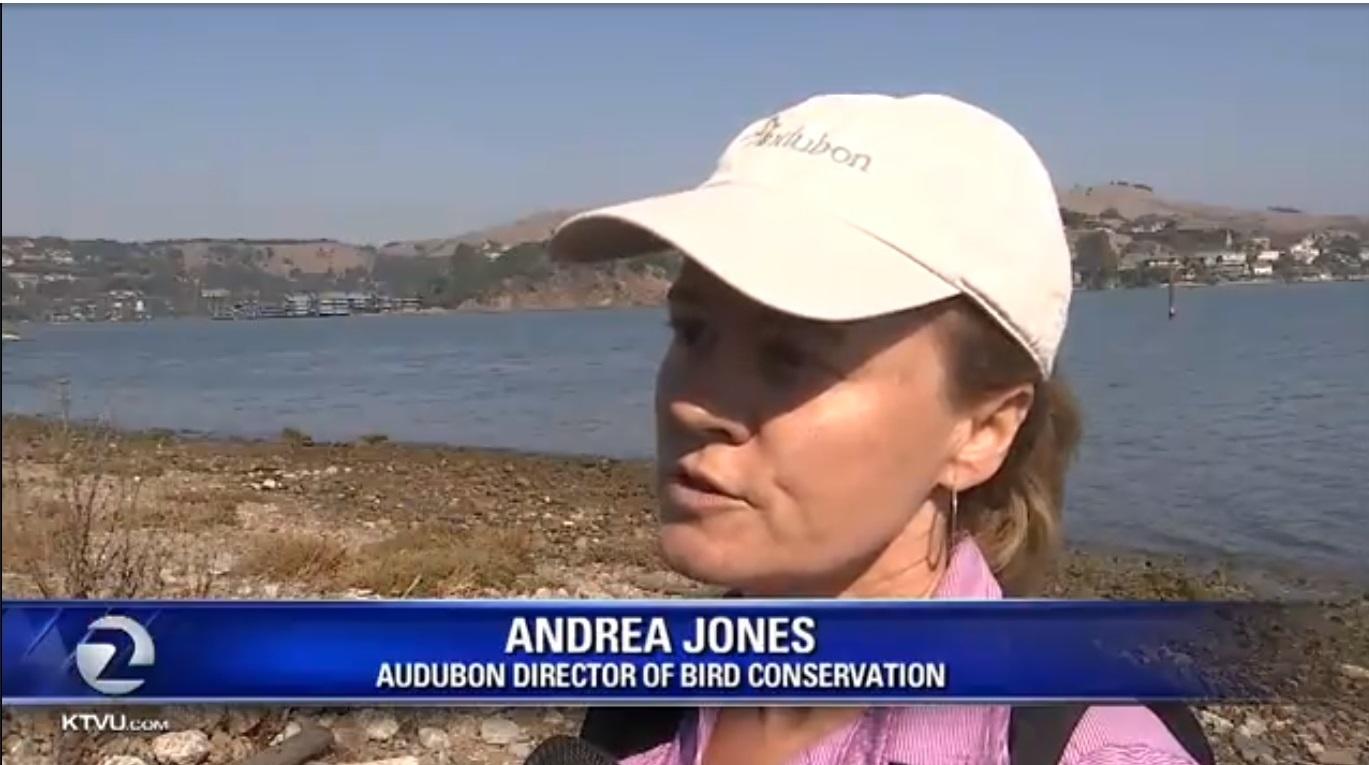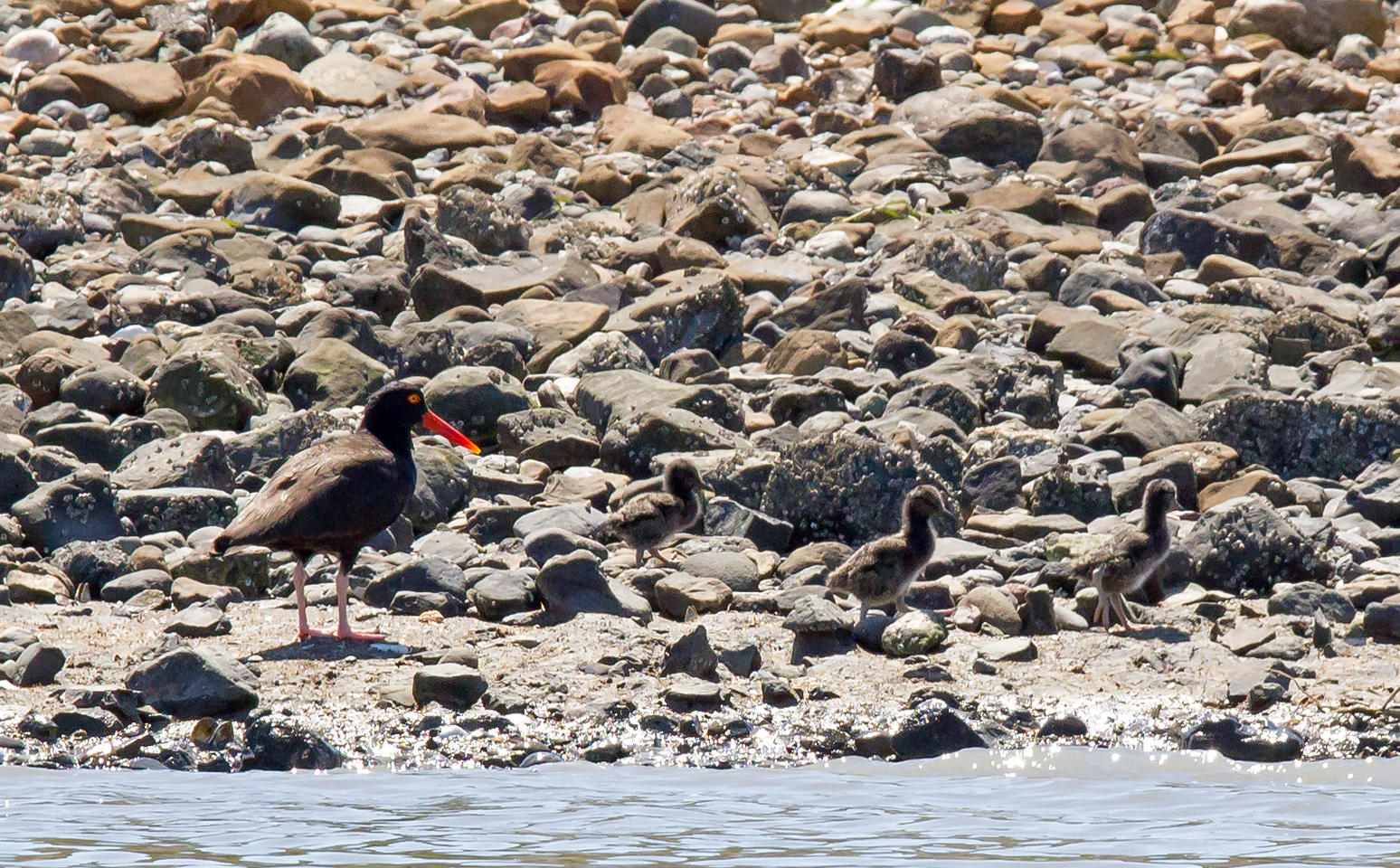Audubon is committed to transforming our communities into places where birds flourish.

Check out this coverage of our restoration work after the Cosco Busan Oil spill on Aramburu Island from KTVU 2 News. The anniversary of San Francisco Bay’s worst oil spill comes as the Trump Administration pushes for increased oil drilling off the California coast. Andrea Jones, Audubon California Director of Bird Conservation, talks about the impact of the Cosco Busan spill, the Aramburu Island restoration, and the birds who depend on the the island and bay.
Watch the full video
Oil kills birds. Read our press release on the 10 year anniversary of the Cosco Busan Oil Spill
Learn more about Arambaru Island

Black Oystercatchers have nested on Aramburu Island for the fourth year since major shoreline enhancement was completed. This year three chicks hatched!
All three eggs hatched on or about June 21st, and three downy hatchlings were seen stumbling about the nest area soon after. Black Oystercatchers can lay up to three eggs, but two is more common. Previous clutches on Aramburu, from what we believe to be the same pair of adult birds, have been limited to two eggs.
As of July 19, we see only two of the three chicks, but both are eating well and looking healthy. The young birds are about four weeks old at this point, and are likely to be able to fly (fledge) within a week or two. Fledged birds will continue to stay with the parents for months, honing their feeding skills.
Shoreline reconstruction on Aramburu Island took place in late 2012, and oystercatchers made their first attempt at nesting in the spring of 2013. The success of their breeding attempts points to the promise of such shoreline enhancement projects in other parts of the Bay and beyond!
Our newsletter is fun way to get our latest stories and important conservation updates from across the state.
Help secure the future for birds at risk from climate change, habitat loss and other threats. Your support will power our science, education, advocacy and on-the-ground conservation efforts.
California is a global biodiversity hotspots, with one of the greatest concentrations of living species on Earth.